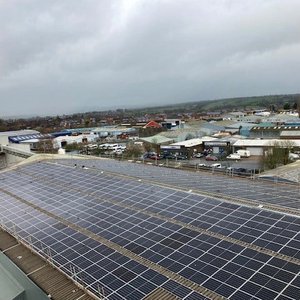A multi-institutional project titled DIVERSIFY is underway to increase the amount of aquaculture species being produced in Europe. Animal nutrition is a key aspect of the research being done.
DIVERSIFY, which began in September 2013, has identified a number of new/emerging finfish species with a great potential for the expansion of the EU aquaculture industry. Although the emphasis is on Mediterranean cage-culture, fish species suitable for cold-water, pond/extensive and fresh water aquaculture have been included as well.
These new/emerging species are fast growing and/or large finfishes marketed at a large size and can be processed into a range of products to provide the consumer with both a greater diversity of fish species and new value-added products. The fish species being studied include meagre (Argyrosomus regius) and greater amberjack (Seriola dumerili) for warm-water marine cage culture, wreckfish (Polyprion americanus) for warm- and cool-water marine cage culture, Atlantic halibut(Hippoglossus hippoglossus) for marine cold-water culture, grey mullet (Mugil cephalus) a euryhaline herbivore for pond/extensive culture, and pikeperch (Sander lucioperca) for freshwater intensive culture using recirculating systems.
These species were selected based both on their biological and economical potential, and to cover the entire European geographic area and to stimulate different aquaculture types. Research is being carried out in the scientific disciplines of Reproduction and Genetics, Nutrition,Larval husbandry, Grow out husbandry, Fish health and Socioeconomics (including final product quality).
Some of the recently shared results related to nutrition for the various species include:
- 0.4% dietary HUFA is not enough to cover the essential fatty acid requirements of larval meagre and, since their elevation up to 3% markedly improved lipid absorption, essential fatty acids levels and growth, a high HUFA requirement in weaning diets is foreseen for this species.
- Although grey mullet are omnivorous at the juvenile stage, 0.5 % taurine DW diet gave significantly (P<0.05) better growth than the control where higher taurine levels (1 and 2%) did not improve fry performance. However, hatchery control gave significantly better growth than all other treatments and produced markedly longer fish. These results suggest that nutrients found in the hatchery control diet are lacking or deficient in the taurine diets.
- Optimum levels and ratios of EFA and carotenoids in enrichment products for greater amberjack have been determined as follows:
- DHA in enrichment products for Artemia 10-17% TFA
- EPA in enrichment products for Artemia 14-20% TFA
- DHA/EPA in enrichment products for Artemia 1-5
- DHA in enrichment products for rotifers 14% TFA
- EPA in enrichment products for Artemia 6% TFA
- DHA/EPA in enrichment products for rotifers 2.3
- Carotenoids levels in enrichment products 10 ppm
Results from the project thus far have presented at various conferences and at the annual Coordination meeting, and are available on the project website.
Learn more about the DIVERSIFY project.










